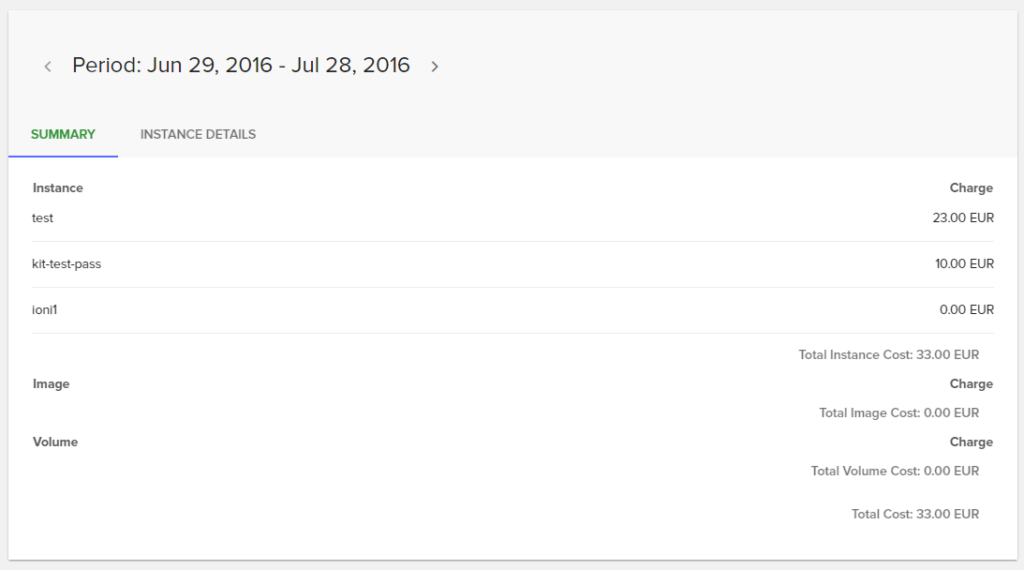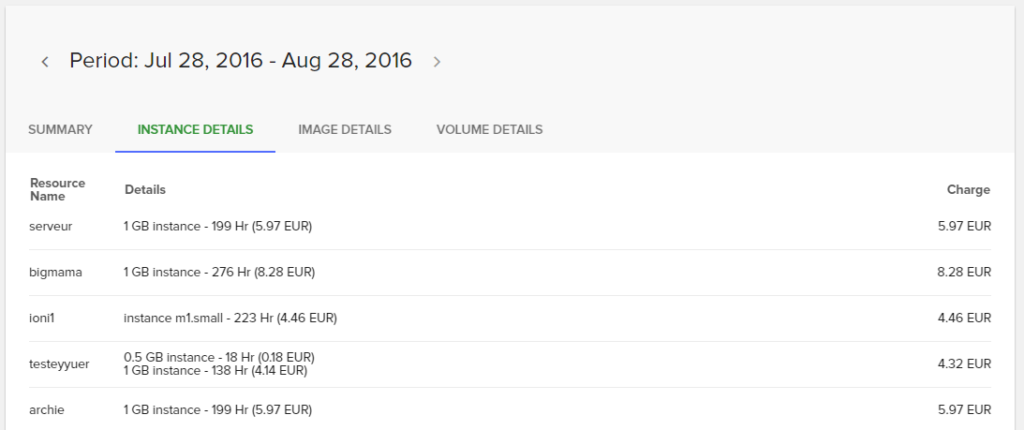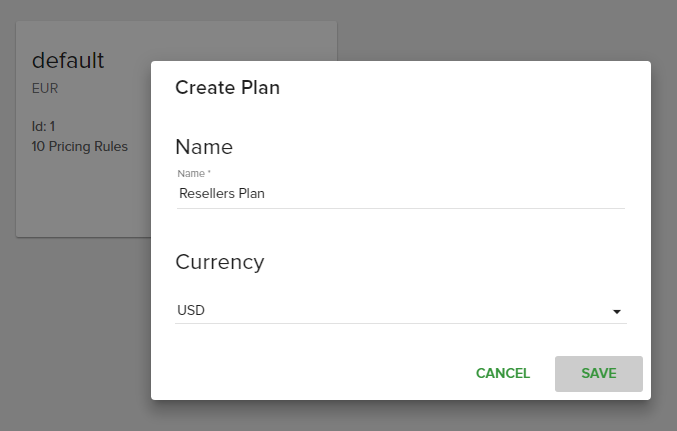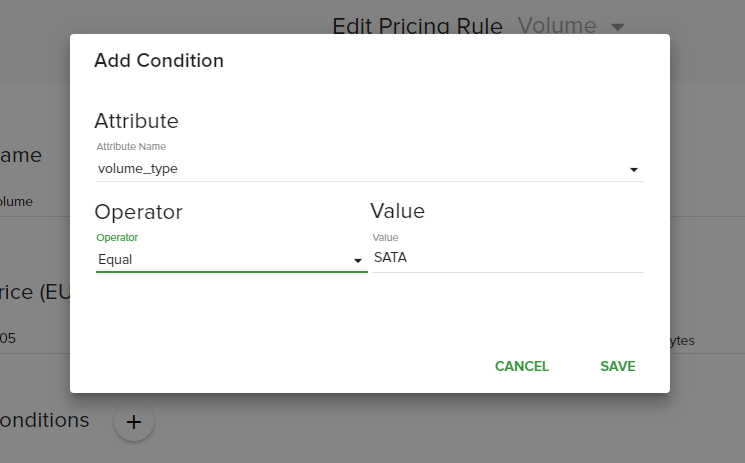As we’re getting close to 1.0-alpha release, I’d like to show you some of the OpenStack billing capabilities of Fleio.
End-users can see a cost summary of their resource usage for the current billing cycle or a previous cycles:

As well as detailed cost information, including number of hours (or other configured time unit) an instance ran and additional cost from traffic over-usage or Windows licenses etc.:

OpenStack billing plans and pricing rules

A default billing plan applies to all customers and you can define further billing plans for various customer categories. For instance, you can to define discounts for resellers or use a different currency for a subset of customers.
A billing plan has several pricing rules.
The first Fleio release will include pricing rules just for OpenStack compute instances with network traffic, volume storage (Cinder) and image storage (Glance), but the engine is implemented to support any kind of OpenStack resources and it’s just a matter of configuration in order to bill other resources like VPN or Swift objects.
Volume and image pricing

You can create separate pricing rules for volume storage and image storage and set billing for one byte, kilobyte, megabyte, gigabyte, terabyte or petabyte per second, minute, hour or month.

By adding conditions under which the current pricing rule applies you can define pricing for different type of storage tiers (i.e. classic SATA storage to be cheaper and SSD storage more expensive).
In part 2 I’ll talk about OpenStack compute instances billing and network traffic pricing rules.
Sign up to our newsletter to get instant access to the online demo of our current version (0.8).
0 Comments
1 Pingback